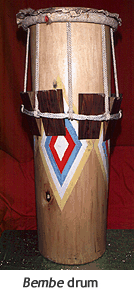Felipe García Villamil

Photo courtesy of the artist
Bio
Afro-Cuban culture is rich in religious artistic tradition, with various West African systems of worship maintained and reshaped in the New World. Many Afro-Cuban instruments, such as the Yoruba-derived batá drums, are remarkably similar to their African antecedents, while many of the syncretic mergings of African deities with Catholic saints have given new visual symbolism to ancient religious figures. The mid-20th century saw the beginnings of significant Afro-Cuban migration to the United States, as Afro-Cuban music gained a foothold in American life and musicians such as drummer extraordinaire Chano Pozo, recruited by Duke Ellington, made their presence known. Much larger numbers of Afro-Cuban refugees followed with the 1980 Mariel boatlift, and among them were many of Cuba's most talented musicians.

Felipe García Villamil was born in Matanzas, Cuba in 1931. His family on his mother's side included many prominent singers, musicians, and dancers of the Yoruba-derived lucumí religion, often known as santería, as well as performers of Matanza province's signature folk music, the rumba. Many of these relatives performed with Cuba's leading folklore groups such as Los Muñequitos de Matanzas, Grupo Afro Cuba de Matanzas, and Conjunto Folklórico Nacional. García Villamil's father was connected both to the Bantu-derived Kongo or Palo religion and to the ritual of the abakwá male secret society, associated with the egba societies of the Calabar region of West Africa. With deep grounding in the three most prominent Afro-Cuban rituals, he became one of most extraordinarily talented of Cuban drummers. He also learned to make the instruments to accompany each ritual tradition: the three sizes of batá drums, the yesá drums, and the set of gourd rattles called güiros or chéqueres. In Cuba, García Villamil directed the highly respected folkloric performing group Emikeke. When he came to the United States in the 1980 boatlift, he settled in New York City, where he formed the group Tradición Matancera and later re-formed Emikeke, comprised of his advanced students and named after his former ensemble. Emikeke performed widely in the region, including the Museum of Natural History, the Caribbean Cultural Center, the Lincoln Center Out-of-Doors Festival, Yale University, and Columbia University. In recent years, he relocated to Los Angeles, where he continues to perform and teach.
García Villamil's skill as a ritual craftsman has also brought invitations to exhibit and to demonstrate his work. His symbol-filled, consecrated "Altar for the Spirit Sarabanda Rompe Monte" was a mainstay of the exhibit Face of the Gods: Art and Altars of Africa and the African Americas, organized by Yale professor Robert Farris Thompson and dedicated to García Villamil and photographer Dan Dawson at The Museum for African Art in New York City. García Villamil was featured in the music documentary film by Les Blank Drums Across the Sea and is the subject of an upcoming book The Life and Times of Felipe García Villamil: Santero, Palero, Abakwá, by ethnomusicologist Ana María Vélez.

